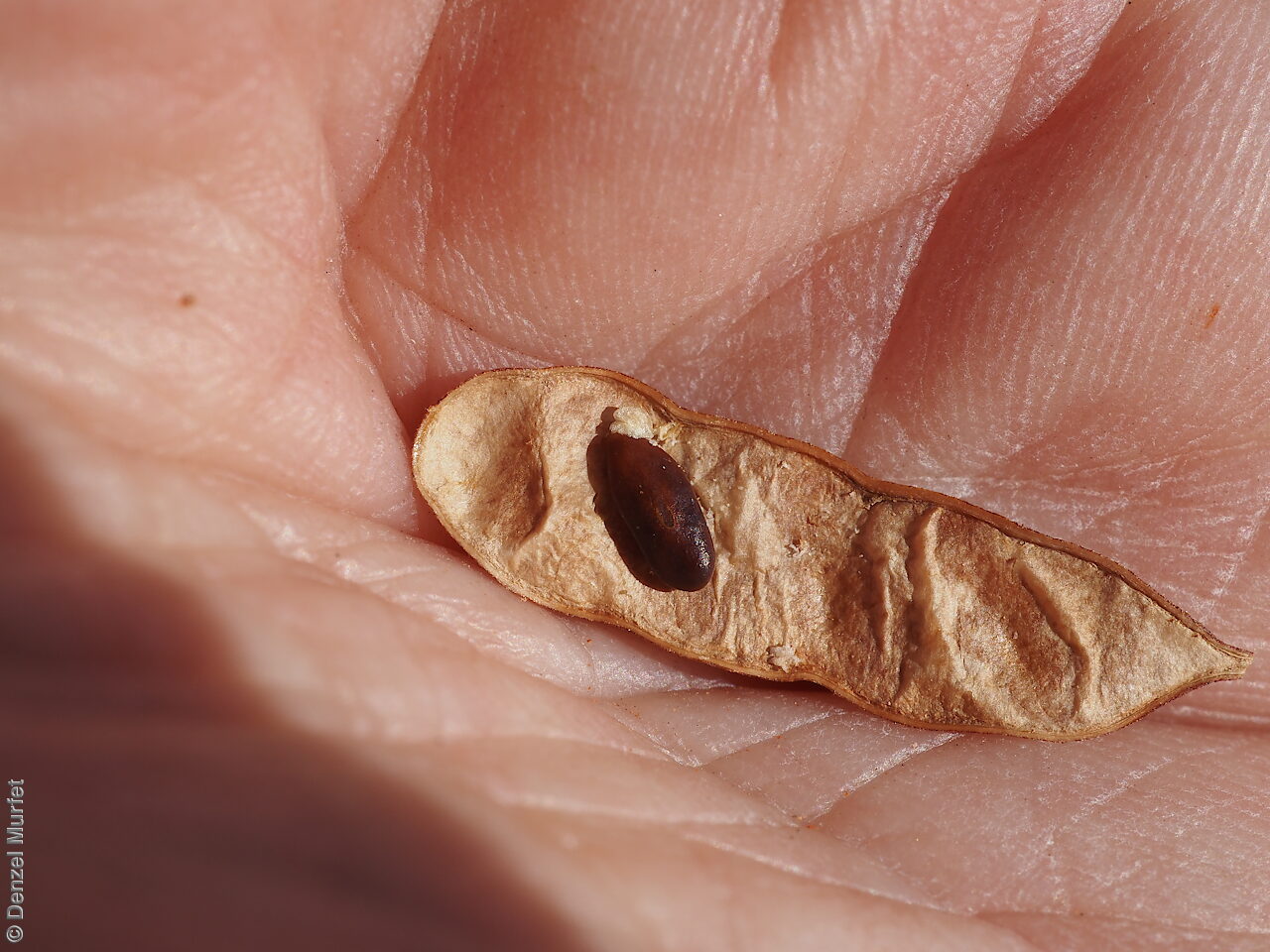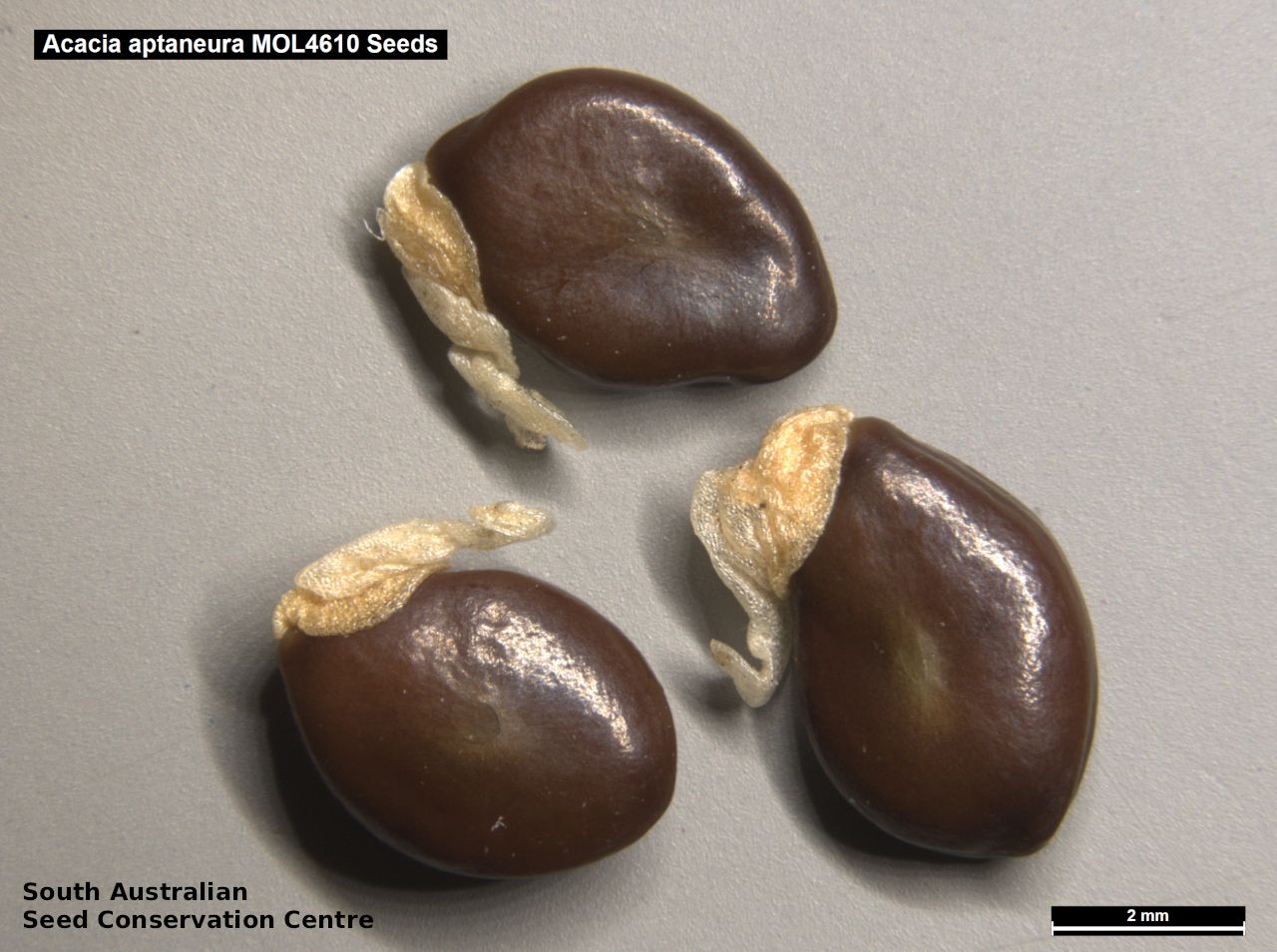


























Botanical art
Prior names
Acacia aneura, partly
Acacia aneura var. conifera, partly
Acacia aneura var. tenuis
Common names
Slender Mulga
Wintalyka
Etymology
Acacia from the Greek 'akakia' and derived from 'ake' or 'akis' meaning a sharp point or thorn and 'akazo' meaning to sharpen. Dioscorides, the Greek physician and botanist used the word in the 1st century AD for the Egyptian thorn tree, Acacia arabica. Aptaneura from the Greek 'a' meaning without and 'pteron' meaning a wing, alluding to the rimmed (wingless) pods and 'aneura' from the Greek 'a' meaning without and 'neuron' meaning a nerve, referring to the obscure veins on the phyllodes.
Distribution and status
Found in the arid part of South Australia. Usually growing on shallow or gravelly soils on hills. Also found in Western Australia, Northern Territory, Queensland and New South Wales. Native. Common in South Australia. Common in the other States.
Herbarium regions: North Western, Lake Eyre, Gairdner-Torrens
AVH map: SA distribution map (external link)
Plant description
Shrub or tree to 6m tall. Branchlets with white appressed and red-glandular hairs between resinous ribs. Leaves straight or curved, flat or rarely subterete to 9.5 cm long and 2.2 mm wide. Inflorescence axillary, solitary with cylindrical pale-yellow flower-heads. Fruits are brown, flat-oblong pod to 4 cm long and 10 mm wide, with resinous rim or rarely with wings to 0.4 mm wide, with some fine hairs. Seeds are brown ovoid seeds to 5 mm long and 3 mm wide, with a long aril. Seed embryo type is investing.
Seed collection and propagation
Collect mature pods that are turning brown with hard, dark seeds inside. Place the pods in a tray and leave to dry for 1-2 weeks or until the pods begin to split. Then rub the dried pods to dislodge the seeds. Use a sieve to separate any unwanted material. Store the seeds with a desiccant such as dried silica beads or dry rice, in an air tight container in a cool and dry place. From one collection, the seed viability was average, at 65%. This species has physical dormancy that needs to be overcome for the seed to germinate (e.g. nicking or softening the seed coat).
| Location | No. of seeds (weight grams) | Number of plants | Date collected | Collection number Collection location | Date stored | % Viability | Storage temperature |
|---|---|---|---|---|---|---|---|
| BGA | 26,700 (293.7 g) | 40 | 25-Oct-2004 | MOL4610 Gairdner-Torrens | 31-Mar-2006 | -18°C |
Number of plants: This is the number of plants from which the seeds were collected.
Collection location: The Herbarium of South Australia's region name.
% Viability: Percentage of filled healthy seeds determined by a cut test or x-ray.